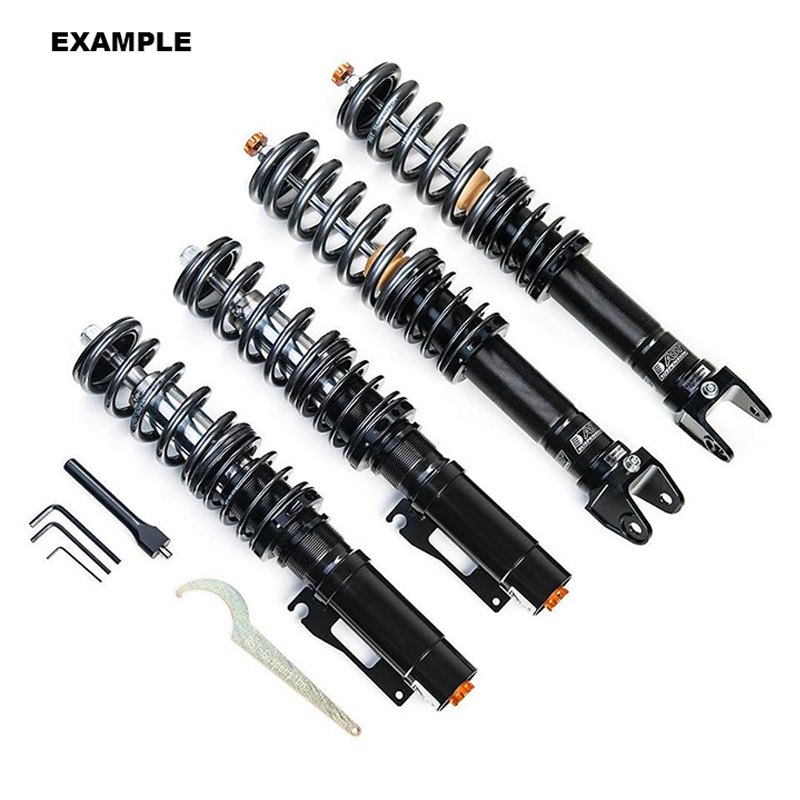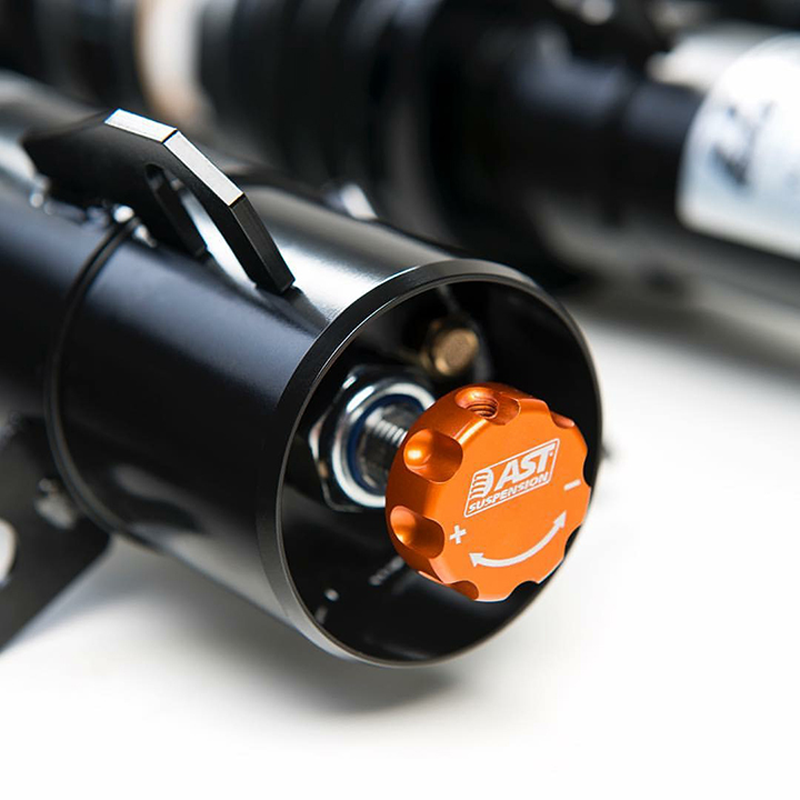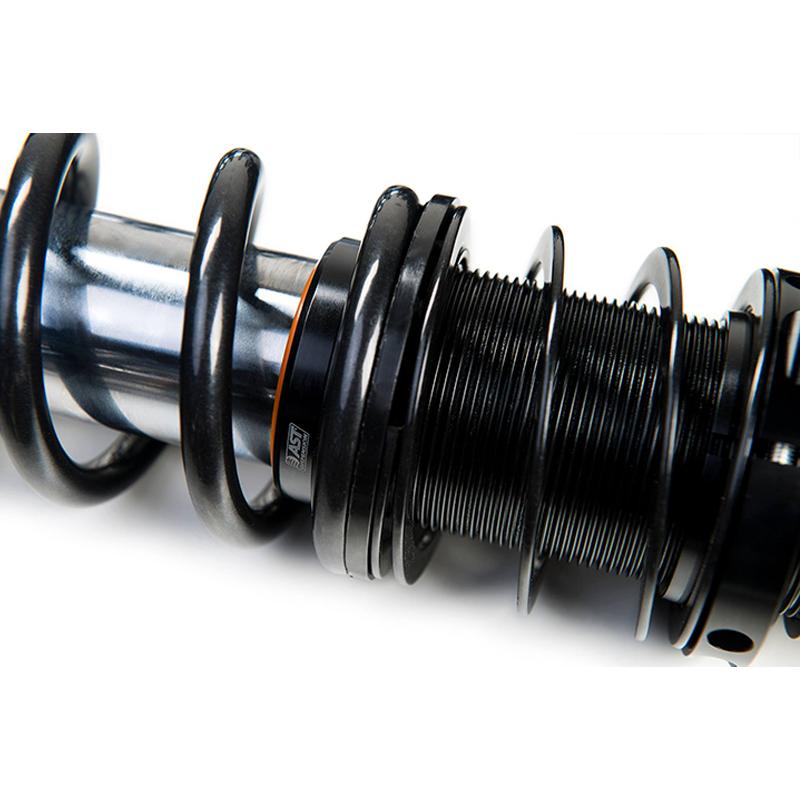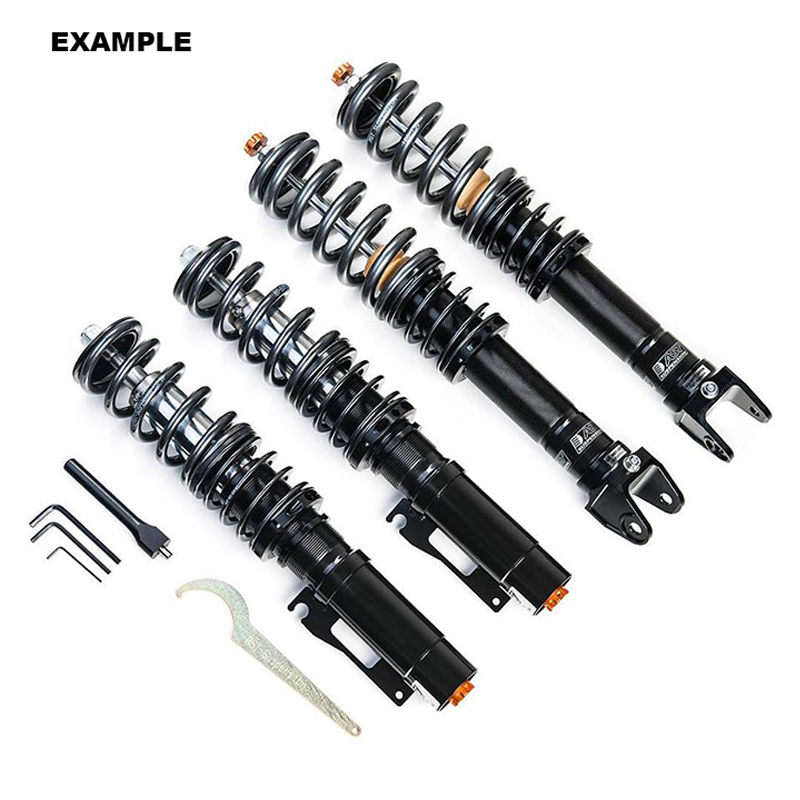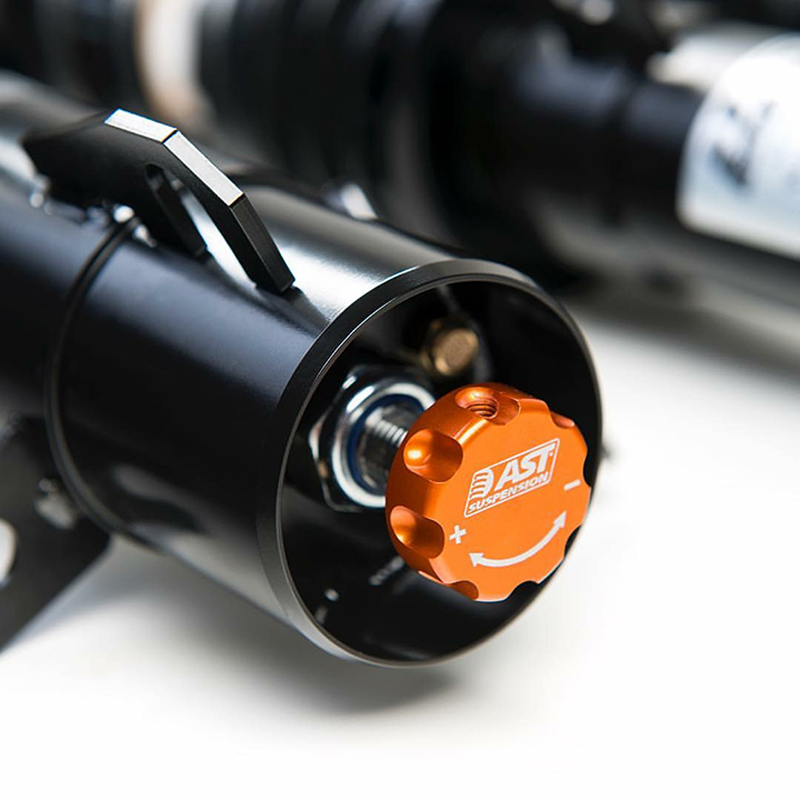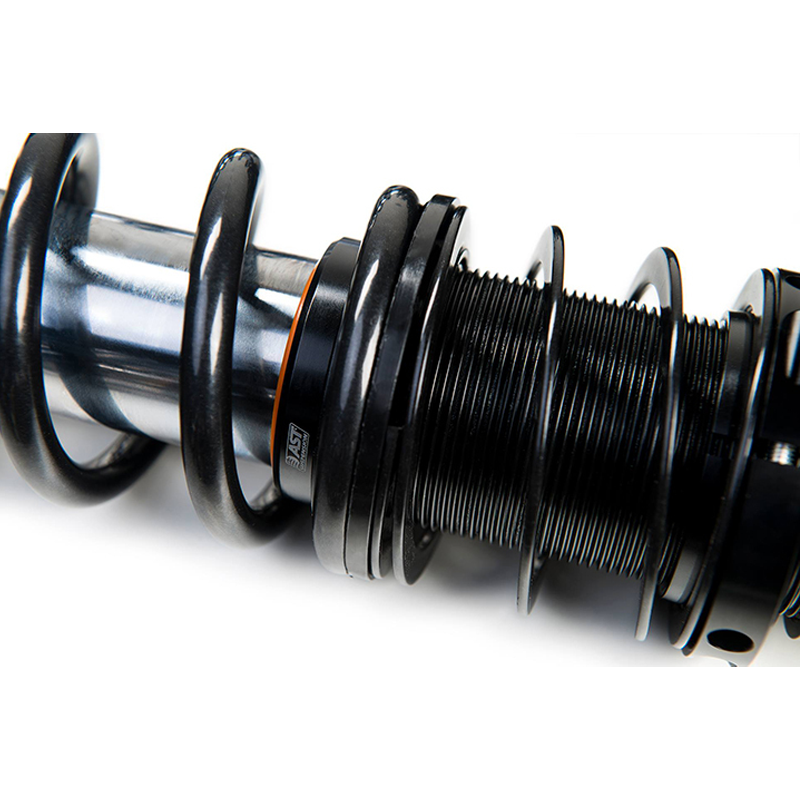AST
AST 5100 Coilovers - BMW F87 M2/M2 Competition
Lead Time - 2 to 3 weeks
Couldn't load pickup availability

AST 5100 Series are 1-way adjustable coilovers that are compatible with OEM top mounts, and a good upgrade for your F87 M2 and M2 Competition for fast road and track use.
Technical highlights include:
- 1-Way adjustable (12 clicks of rebound adjustment)
- Gas-pressurised, Monotube technology for improved handling and performance
- Compatible with OEM top mounts
- Inverted strut design to cope with heavy cornering and braking loads
- Fully ride-height adjustable
More information

The AST inverted damper system is a race-inspired design that gives the damper far more strength and resistance to the high g-forces generated by fast driving. This design retains the suspension geometry of the car during the cornering, braking and acceleration phases, ensuring consistent cornering performance.
The ride-height adjustment platform allows you to adjust the ride height of your car whilst retaining the maximum stroke of the damper.
AST's Monotube technology improves the damper's performance and efficiency by separating the damper oil and nitrogen gas inside the damper with a floating piston. This floating piston design, combined with the use of high-pressure nitrogen, helps to eliminate cavitation around the piston.
The larger piston and lack of cavitation increases the damper performance and the sensitivity of the dampers felt by the driver. All of this combines to produce more grip, increased control and driver feedback.
Technical information

- Floating piston design with high pressure nitrogen eliminates cavitation around the piston
- 14mm diameter internal shaft
- 44.5 mm diameter shaft struts, inverted
- High end, track ready suspension
- Low friction seal
- Rebound adjustable (‘’Singles’’)
- Rubber bushings for ‘’eye’’ shock mounts
- Adjuster knobs permanently mounted on the dampers
- Optional spherical top mounts
- Rebuildable
- Optional custom valving
- Optional DLC Coated shafts
True coilover or divorced spring?

It is possible to spec some aftermarket coilovers with either a true coilover or divorced spring setup for the rear suspension. What do these mean and what are the benefits?
True coilover
A true coilover setup is where the rear spring and damper are a combined unit. The spring coil is pressed onto the shock, creating a traditional 'coil over'. This combined unit attaches to the rear top mount of the chassis.
The benefits of the true coilover setup are twofold. Firstly, as the damper and spring assemblies are in the same position, adjusting them is far easier. With a true coilover, adjusting both the ride heights and damper settings is much simpler than compared to a divorced spring setup. The second benefit is that the spring to damper ratio is far more closely related than compared to a divorced spring setup. A true coilover rear allows springs rates to be more accurately chosen and higher spring rates can be used without having to compensate for a more disparate spring to damper ratio.
This makes true coilovers the ideal choice for intensive trackday applications or for drivers who want to get the most performance from their chassis.
Divorced spring
Many OEM manufacturers such as BMW use a divorced spring setup as standard. A divorced spring setup is where the damper is the sole point of connection between the rear wheel assembly and the chassis. The spring is 'divorced' from the spring and sits on a spring cup on the lower control arm in a spring perch.
This setup is mainly chosen for ease of manufacture and simplicity. With an aftermarket coilover kit, a divorced spring setup is still a good choice for more fast-road oriented builds as longer travel damping can be achieved for more ride compliance.
The downsides of a divorced spring setup are that the ride height can be far harder to adjust using the adjustable spring perches, as opposed to ride height adjustment collars on a true coilover. A divorced spring setup means there is a greater variable between the spring and damper ratio due to the distance between the spring and wheels, as opposed to a true coilover setup. This difference ensures a divorced spring setup cannot match the ultimate performance of a true coilover setup.
A divorced spring setup is more desirable on a fast road car.
